Keeping Pace With Your Pedal Preferences
If you climb aboard your Wayback Machine, for a short spin just a little way back, we polled you all about pedals in 2011. One in three of you said that if your road/tri bike pedals were stolen, raptured, beamed up, you’d replace them with Speedplay. Another 22 percent of you said Shimano SPD-SL, and most of you, 35 percent, said you’d invest in Look Keos. Next was Time with 5 percent and “other” took up the remaining 6 percent. Of course few of us thought of a power meter stuck in a pedal back then.
That poll you all answered back in 2011 doesn’t jibe with what we see ridden at the Ironman World Championships, where the pedal brand order is jumbled. Of course there is no clean intersection between Kona’s cyclists and Slowtwitch readers. Still, we see over and over that wheel, pedal, helmet and other choices made by Kona competitors are not close to what we see in the real world. And I say this as the originator of the Kona Bike Survey!
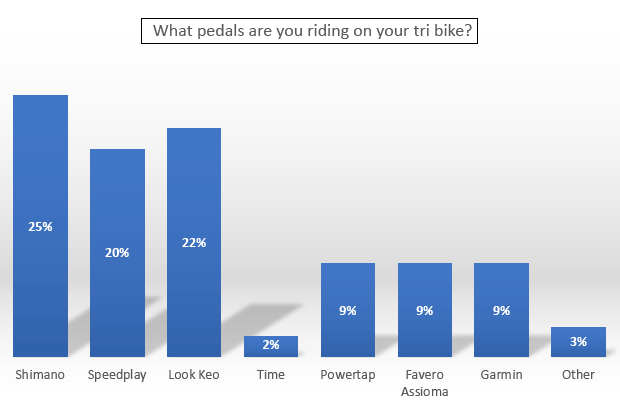
Lots of times wheel, component, aerobar and saddle choices are simply what came on the bike the Kona athlete was sold, which means they really weren’t the user’s choices at all. This skews the sense of what people are really using and between now and Kona we’ll report on what folks are actually buying, when they have a choice, or what they want to buy if the choice arises. Let’s start with pedals.
We just polled this. About 1,700 of you answered the poll and you did select Shimano as your favorite pedal (as you did 8 years ago), but not by a wide margin. It’s almost a dead heat between Shimano, Speedplay and Look. I’m not surprised because these are all great pedals. Here’s which pro triathletes are riding what according to my latest knowledge, and I know I may get some angry notes when I write this! I promise to make changes as I’m aware of any mistakes in my list below, and I’ll list the mistakes at the end of what I’m writing as I’m apprised of any errors I might make.
The last I knew, Cameron Wurf, Sebastian Kienle, Jan Frodeno, Josh Amberger, Matt Hanson, Alistair and Jonny Brownlee, Andy Potts, Frederik Van Lierde, David McNamee and Matt Russell were all on Speedplay.
I’ve heard Lionel Sanders just changed to Shimano and also on Shimano pedals are – again, last I checked – Ben Hoffman, James Cunnama, Lucy Charles, Bart Arnouts, Tim Van Berkel. Also Heather Wurtele and Sarah True.
The two historic users of note of Look Keo pedals are Kona champs Patrick Lange and Daniela Ryf. I don’t know if Patrick is still riding Look. Sarah Crowley and Heather Jackson were on Look the last I checked, as was Rudy Von Berg. Cody Beals aboard his Ventum is a Look pedal rider.
A former triathlete, the greatest American timed racer ever, probably greatest from any country, Kristin Armstrong has been a Speedplay user from the beginning. Speaking of the world’s best time trialists, world TT champ (and another triathlete) Emma Pooley has been on Speedplay when I’ve seen her bikes. And speaking of the world’s best timed racers who used to be triathletes, Victor Campanaerts rides Look pedals.
You might wonder about the absence of power pedals among these riders. Am I just not mentioning these folks? Have I got a bias? Yes, I do. I don’t like power meters in pedals. Strike that. I’m fine with them as long as they perform all the functions of a pedal. I don’t find that the current power pedals perform the functions I need. Yet.
That said, Michelle Vesterby, Holly Lawrence and Tim O’Donnell are all Garmin pedal users, to the best of my knowledge. Beyond these, I find very few elite triathletes using power pedals. Many of them are no doubt users of power meters provided by other brands, and have those meters embedded in their cranks, hubs or elsewhere. The last I heard Ivan Rana was using Powertap as his power meter, but the hub, not the pedal. He was riding Speedplays. Thiago Vinhal from Brazil, Powertap hub but Look pedals. (I’ve always been a big admirer of Powertap’s hub.)
For all that, Slowtwitchers were early and avid adopters of power pedals: Powertap, Garmin and Assioma. The first two have had their issues (bearings and battery doors respectively), since solved, and the Favero Assioma hasn’t had any hiccups that I have seen.
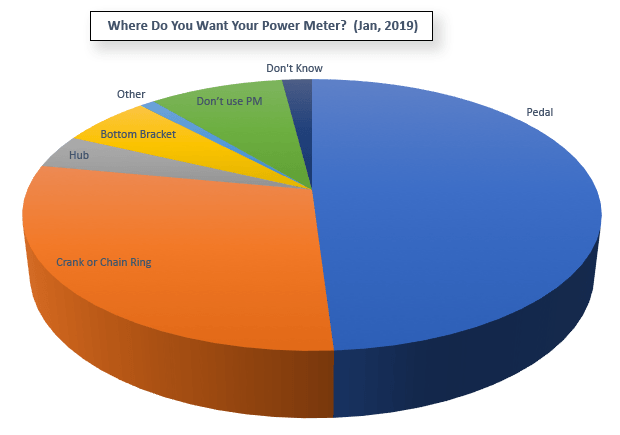
When I asked you all a year and a half ago where you wanted your power meter, 48 percent of you said, “In the pedal.” In that poll, 16 percent of you answered that you don’t know, don’t use a PM, haven’t decided, and if you back out that 16 percent then 57 percent of you wanted power pedals, and the other 43 percent standard pedals.
I asked the very same question 8 months ago, and got a pretty similar answer out of the 1,250 of you who answered: 49 percent wanted the power meter in the pedal, and only 12 percent were non-PM users, etc., which means 56 percent of you wanted pedals that had the PM inside of it.
But I think this might be changing. In our poll, just taken, it’s a dead heat between Garmin, Powertap and the Favero Assioma: 9 percent of you favor each of these. This means (unless I’m missing a power pedal) that only 27 percent of you now favor your power meter in the pedal. Why? Because I’ve been reminding you what pedals do? I doubt it. Maybe it’s the use of these power pedals and the bloom is off the rose.
But there’s a more obvious possible answer. I asked you earlier where you wanted your PM. Most recently I asked you what you were riding, right now, not what you wanted to ride. Perhaps a lot of you intend to ride power pedals and you just haven’t yet made the purchase.
Jordan Rapp said something within the last month that mirrors what I’ve felt, and he’s the only one I’ve heard who’s voiced this notion I have: Power meters are fast approaching ubiquity, are almost a commodity item, and are likely to become original spec in the new bikes you’re going to buy. Taking Quarq as an example, yes, this SRAM subsidiary has just purchased the Powertap brand earlier this year, and so now can market a crank, pedal, and hub-based power meter. What are they going to do with this purchase? I don’t know. I hope (as you might guess) that they update the hub, make it XDR driver compatible and accepting of a Centerlock rotor. If so, count me in as customer #1.
That said, when I look at how easy it seems to be to place a Quarq PM on a SRAM spider (or on a chain ring direct mounted to a crank) it seems just a matter of time before SRAM offers its kits with PMs at prices hard to pass up. While $3,000 is not cheap, I could easily imagine an electronically shifted road or tri bike with a power meter at $3,000 within 3 or 4 years.
Why does this matter? It’s going to be hard to justify the power pedal if the bikes you’re buying tend to come with a power meter already installed.
I will visit this again in 2020. My prediction is that we’ve seen the high water mark of power pedals, and that by 2020 we’ll begin to see power meters as original equipment on bikes at least at the mid-price range, on bikes selling complete at $3,000 to $4,000, and maybe even lower, if SRAM brings its AXS and 1x AXS cranks, chains, cassettes down to mechanical shifting.
Or I’m dead wrong. Let’s reconvene in a year.


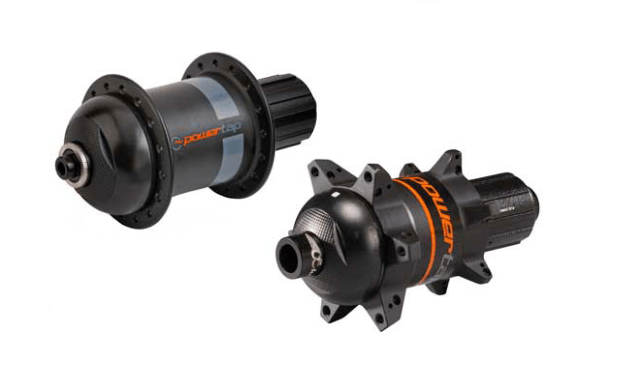
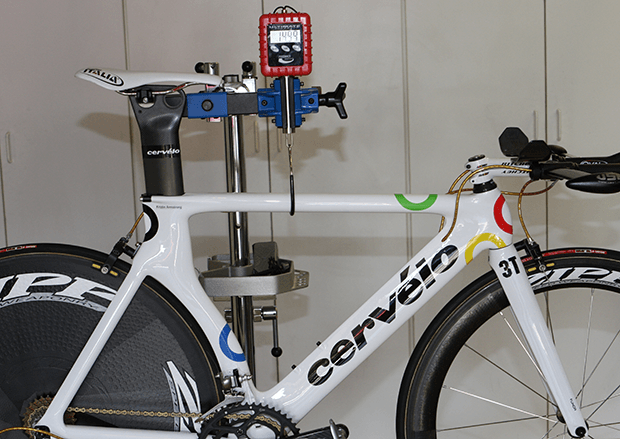
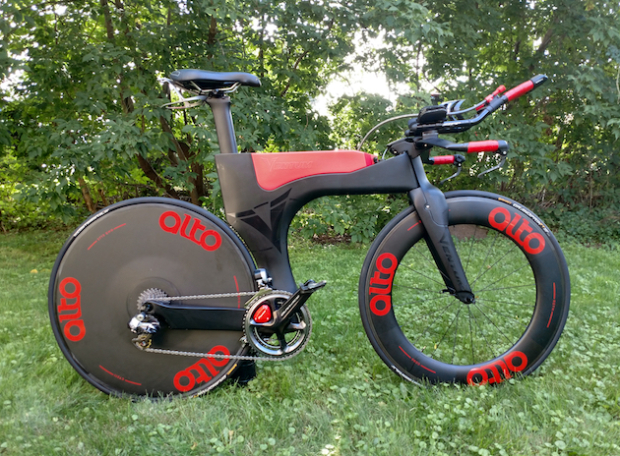
Start the discussion at forum.slowtwitch.com